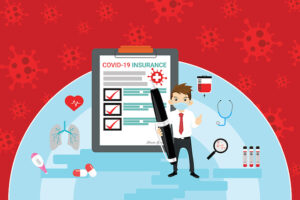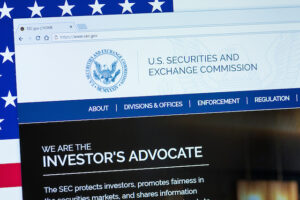On Sept. 19, in a departure from the traditional life insurance business model, all John Hancock life insurance policies sold will come with Vitality — a behavior change platform that rewards customers for the everyday steps they take to live longer, healthier lives.
Built on the convergence of behavioral economics and consumer technology, John Hancock Vitality policies incentivize healthier choices linked to physical activity, nutrition and mindfulness.
“For centuries, the insurance model has primarily provided financial protection for families after death, without enhancing the very quality it hinges on: life,” said Marianne Harrison, John Hancock president and CEO. “We fundamentally believe life insurers should care about how long and well their customers live. With this decision, we are proud to become the only U.S. life insurance company to fully embrace behavioral-based wellness and leave the old way of doing business behind.”
Boston-based John Hancock began offering Vitality — now available in 48 states (excepting New York and North Dakota) — as part of its overall set of offerings in 2015 in response to a troubling shift in Americans’ health: lifestyle diseases are the leading cause of death. According to the Oxford Health Alliance, just four choices — physical inactivity, an unhealthy diet, excessive alcohol and smoking — now cause more than 60% of deaths and 80% of the disease burden globally. 1
To face this challenge, John Hancock turned to Vitality and its pairing of technology, incentives and science to inform and reward customers for making healthier choices every day.
The results are compelling. To date, worldwide Vitality policyholders have shown to:
- Live 13-21 years longer than the rest of the insured population 2
- Generate 30% lower hospitalization costs than the rest of the insured population 2
While John Hancock Vitality policyholders:
- Take nearly twice as many steps as the average American 3
- Have logged more than three million healthy activities including walking, swimming, and biking 4
- Engage with the program approximately 576 times per year — compared to customers with traditional insurance, who engage with their life insurance company one or two times per year on average 4
“The remarkable results of our Vitality offering convinced us this is the only path forward for the industry,” said Brooks Tingle, president and CEO of John Hancock Insurance. “We have smart phones, smart cars and smart homes. It’s time for smart life insurance that meets the changing needs of consumers. We believe offering Vitality on all life insurance policies, at no additional cost, is the right thing to do for our customers, our business and society. We believe this is the future of our industry, and I encourage other insurance companies to follow suit.”
“Poor eating and other unhealthy lifestyles have created an epidemic of preventable, chronic disease, hurting American families and businesses. John Hancock should be applauded for extending its Vitality program to focus on healthier food and lifestyles across its portfolio,” said Dariush Mozaffarian, MD, DrPH, Dean of the Friedman School of Nutrition Science & Policy, Tufts University. “Recognizing the complexities and confusion over good nutrition, John Hancock is collaborating with the Friedman School to ensure that strong science informs these efforts.”
Two options available
 John Hancock Vitality Life Insurance now offers new and existing* customers two options to support and incentivize healthier choices, wherever they are in their wellness journey:
John Hancock Vitality Life Insurance now offers new and existing* customers two options to support and incentivize healthier choices, wherever they are in their wellness journey:
- Vitality GO: Vitality GO will be offered on all life insurance policies, at no additional cost. With this basic ‘be healthy’ version of the program, consumers will have access to expert fitness and nutritional resources and personalized health goals through an easy-to-use app and website. And as they reach key milestones, their healthy activities will be rewarded with discounts at major brand outlets (including Amazon, REI and more) but annual insurance policy premiums are NOT discounted.
- Vitality PLUS: For $2 a month 5, customers will receive all the benefits of the John Hancock Vitality Program, including savings of up to 15% on annual premiums and valuable rewards for the everyday things they do to stay healthy, like exercising, eating well and getting regular checkups. Consumers can earn an Apple Watch for as little as $25 plus tax or receive a complimentary Fitbit device to make it easy to record their healthy activities. On Sept. 19, John Hancock also announced these additions to the program:
- Starting Oct. 1, 2018, exclusive customer discounts at more than 400,000 hotels around the world in partnership with Hotels.com.
- Starting January 2019, members who reach platinum status for three consecutive program years will receive a one-year Amazon Prime membership.
According to CB Insights, about 20% of Hancock life insurance customers signed up for Vitality in 2015. Hancock has since doubled that figure to about 40%, which reportedly was below expectations.
In the Google Play store, the John Hancock Vitality app has somewhere between 1,000 to 10,000 installs. The app bumped up in the App Store after the announcement and now ranks at 1,138 overall.
Over the past three years, policyholder use of Vitality has increased 706% (unclear off of what base). Vitality users check in an average of 40 times per month. Per the NYT: “What drove the decision to make Vitality mandatory on all new policies was not the adoption rates but how customers used the offering.”
Looking more broadly at its standing in term life, CB Insights found John Hancock issued $38B in new term life value, ranking 11th among life insurers in 2017.
For more information about the John Hancock Vitality Life Insurance program, visit https://www.johnhancockinsurance.com/vitality-program.html
*Vitality GO and PLUS will be rolled out over time, beginning in 2019, for existing John Hancock life insurance policyholders
About John Hancock and Manulife: John Hancock is a division of Manulife Financial Corporation, a leading international financial services group that helps people make their decisions easier and lives better. The company operates primarily as John Hancock in the U.S., and Manulife elsewhere. The company provides financial advice, insurance and wealth and asset management solutions for individuals, groups and institutions. Assets under management and administration by Manulife and its subsidiaries were over CAD$1.1 trillion (U.S. $849 billion) as of June 30, 2018. Manulife can be found at manulife.com.
One of the largest life insurers in the U.S., John Hancock supports approximately 10 million Americans with a broad range of financial products, including life insurance, annuities, investments, 401(k) plans, and college savings plans. John Hancock also offers advice through Signator, a network of independent financial advisors. Additional information about John Hancock may be found at johnhancock.com.
About Vitality: Guided by a core purpose of making people healthier, Vitality is the leader in improving health to unlock outcomes that matter. By blending smart tech, data, incentives, and behavioral science, Vitality inspires healthy changes in individuals and organizations. More than 8 million people in 18 countries engage in the Vitality program. For more information visit www.vitalitygroup.com.
1 The Oxford Health Alliance: Chronic Disease an economic perspective, 2006 http://www.who.int/management/programme/ncd/Chronic-disease-an-economic-perspective.pdf
2 Insuring Shared Value: How Insurers Gain Competitive Advantage by Better Addressing Society’s Needs, June 2017, http://vitalitysharedvalueinsurance.com/pdf/insuring-shared-value.pdf
3 Steps data from BusinessInsider.com, July 2015.
4 Data based on policyholder experience since inception in the U.S., April 2015.
5 For single life permanent products. For term products, the rider fee will be 3% of the policy’s modal premium.
Premium savings are in comparison to the same John Hancock policy without the Vitality program. Annual premium savings will vary based upon policy type, the terms of the policy, and the level of the insured’s participation in the John Hancock Vitality program. Insurance policies and/or associated riders and features may not be available in all states.
Apple Watch program is not available in New York. Apple is not a participant in or sponsor of this promotion. In New York, entertainment, shopping, and travel rewards are not available and are replaced by healthy living and active lifestyle rewards.
Vitality is the provider of the John Hancock Vitality Program in connection with policies issued by John Hancock Insurance products are issued by John Hancock Life Insurance Company (U.S.A.), Boston, MA 02210 (not licensed in New York) and John Hancock Life Insurance Company of New York, Valhalla, NY 10595.














Personally, I am not sending my data to some Insurance company. They are getting one look at me during underwriting. That's it.
Same with those snitch boxes some auto carriers want to install in our cars. Nope!
I don't think that really counts.
After all, once they gouge their eyes out, they really can't look again, can they?
Yuck Yuck Yuck
We love this carrier. We sent out an email blast a while back mentioning the compensation that is available via N.A.A.I.P. – 11 IMOs told JH that they will boycott JH if N.A.A.I.P. continues to publicize those compensation rates online. Of course, to keep the peace we decided not to publish online the commission percentage.
Regardless, Please join N.A.A.I.P.'s 123 Term Life Club.
Our 120 FEX Club features numerous FEX carriers paying 120% first year commission.
N.A.A.I.P. is all about what is the best for the insurance agent.
They broke it up into 2 Programs:
Vitality GO and Vitality Plus
Clients can upgrade to Vitality PLUS at any time during the first 25 months and automatically transfer their Vitality GO status and points to earn premium savings and even greater rewards.
For John Hancock Term policies with the optional Vitality rider, the cost for Vitality PLUS is 3% of your annual premium and for Protection SIUL policies, the cost for Vitality PLUS rider is $4.00 a month.
Think how safe we’ll be when all data is consolidated in one place and guides us every step of the way throughout our entire life.
Oh wait….the gubmt already tracks us. Snowden let that cat out. Perhaps the data can simply be rented to the carriers.
Insurance will be almost free!!!!
Placed a policy with JH recently PIA to get done. I finally had to ask would the numbers go up if they didn't play along? No… So OK then that's fine let's get rolling. my client can do it if they want to, I don't care.
Great article .. I will be linking to it from my John Hancock page.
Instead of gimmicks, they should concentrate on offering better products, premiums, & servicing. When I did do biz with them, it was a huge PIA. Whenever I look at their products and run illustrations, they just dont seem even close to competitive. There are enough things already to explain and review with a client. This is just needless complication.
Doubling down on this program has got to be the dumbest decisions they could have made, just wasted resources. If your offer is solid, you dont need gimmicks.
Just thinking out loud. Could this information find it's way into MIB? Could it be used to rescind a policy with in the first two years?
I asked JH that question about MIB. No issues. They don't share the information.
Like it or hate it, at the very least, this is generating some consumer awareness. I've seen lots of mainstream media coverage of it, including Washington Post piece yesterday:
Could a bold move by John Hancock upend the life insurance industry?
Yes, look at the thoughts of the 8 people aware of this. Unless the article has someone dying, is argumentative, political or about the Kardishians, consumers don't read this type of stuff. It is merely filler. If these comments on this Washington Post article are an indication, this is not going to bode well for Hancock.
Maybe, maybe not. Im just not personally a fan of it from any angle.
Major media articles are not going to sell insurance for JH unless they decide to start selling direct to consumers. When a consumer goes to an agent asking for a crappy policy, they usually get sold something more competitive.
So major media articles are most likely to sell policies for the carriers that are most competitive. A better use of resources, in my opinion, would be to market it to agents and convince them to sell it. But you need a competitive product to do that effectively.
Instead of something complicated with all these moving parts. How about streamlining UW? Their competitors are simplifying the UW process greatly. Making the product easier to understand with less complication. That is what consumers want in my experience.